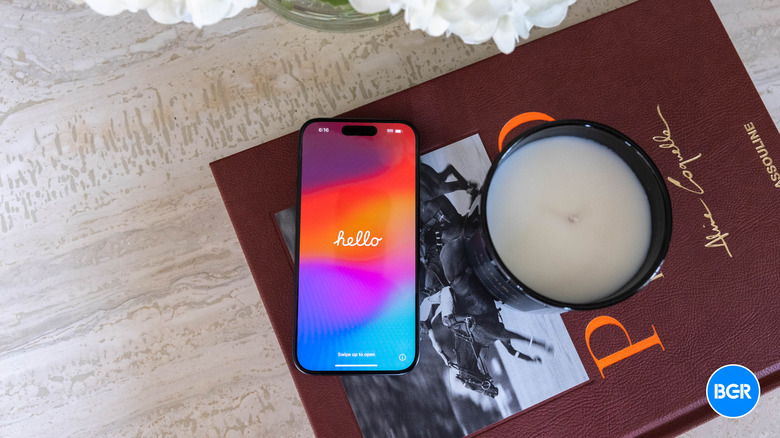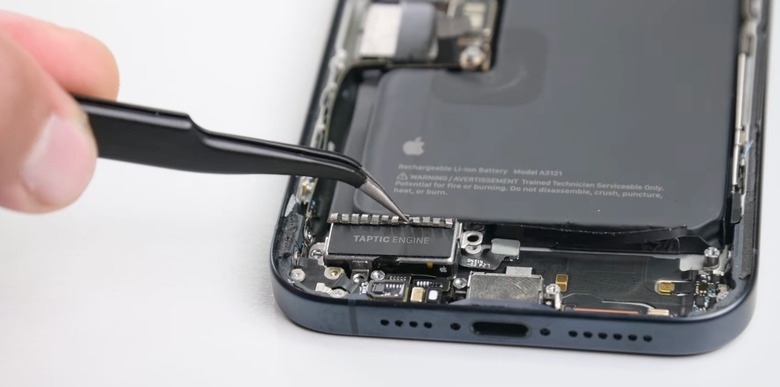I Hope The iPhone 16 Won't Have The Same Overheating Problem As The iPhone 15 Pro
It's unclear how widespread it is, but the iPhone 15 Pro and 15 Pro Max are overheating in real-life use. We've heard of two separate instances where the more expensive can become hotter than usual. First, the A17 Pro System-on-Chip (SoC) can overheat during intensive tasks like high-end gaming. Then, the iPhone 15 Pros can overheat while the battery charges. Combining these activities could also lead to overheating, but that's just speculation.
Apple will have to find a way to fix these separate overheating issues or potentially risk alienating some buyers who would spend more money on an iPhone 15 Pro rather than a regular model. However, all Apple can do right now is tweak the software. That said, I certainly hope the iPhone 16 and iPhone 16 Plus will not inherit the iPhone 15 Pro's heating issues.
What we know about iPhone 15 Pro cooling
Ming-Chi Kuo addressed the iPhone 15 Pro overheating issues, saying the handset's design is to blame rather than the powerful A17 Pro chip. Specifically, Kuo claims Apple has made compromises on the thermal system. The use of titanium might impact thermal efficiency, the insider said. Moreover, a reduced heat dissipation area could prevent proper cooling.
Apple explained the technology behind the iPhone 15 Pro's titanium-aluminum chassis, highlighting the thermal dissipation properties of the two metals:
The titanium encases a new aluminum sub-structure that is bonded using solid-state diffusion.
This is an industry-first innovation, using a new thermo-mechanical process that joins these two metals with incredible high strength.
Using aluminum on the inside creates synergistic properties with the titanium enclosure, helping with thermal dissipation and further weight reduction.
Separately iPhone 15 Pro teardowns have shown the handset features graphite layers on top of the logic board to help move heat from the internal components to the glass. Graphite film is also present on the internal side of the rear glass panel.
Apple can release iOS updates to prevent overheating while the battery is charging. But the only way to avoid the A17 Pro from getting too hot during intensive tasks is to throttle the performance. That's what software can do. Apple can't give the iPhone 15 Pro better cooling without a redesign of the internal components. And that won't happen.
The affordable iPhone 16 will be an iPhone 15 Pro version
Considering what Apple did with the iPhone 14/Plus and the iPhone 15/Plus models, it's very likely the iPhone 16/Plus will be more affordable versions of the iPhone 15 Pro/Max.
What that means is the iPhone 16 and 16 Plus will feature the same design as the iPhone 15 Pro versions, though Apple might not be ready to use titanium on cheaper models so soon after its introduction. Therefore, the cheaper iPhone 16 models might come with an all-aluminum chassis, and this might improve cooling. I am just speculating here.
Another big departure from the iPhone 13 and iPhone 14 playbook might concern the chip. A few days ago, I said I hoped Apple would find a way to bring the A17 Pro to the iPhone 16/Plus. But I considered the possibility that Apple would create an A17 Bionic version for those phones. After that, reports indicated that Apple could change the base iPhone 16 chip by switching to a more affordable TSMC node.
But with the iPhone 16, Apple can also do something else to prevent overheating. It can add a better cooling system to it, so heat dissipates better than what's available from the iPhone 15 Pros. In such a case, Apple could give the base iPhone 16 models a chip close in performance to the A17 Pro, if not the exact same hardware, while reducing overheating instances.
Remember that the next-gen iPhone must deliver an even faster/more efficient chip. It's not that we, consumers, necessarily need a faster performance from mobile devices. It's that Apple can't afford to look like they're not at the forefront of SoC innovation. Therefore, Apple needs to find a hardware solution to prevent the iPhone 16 Pros from overheating.

